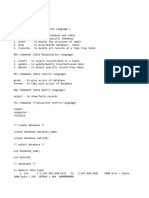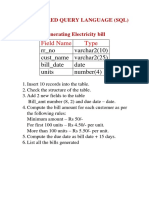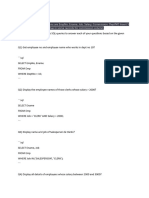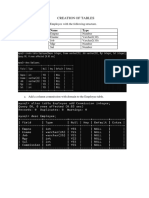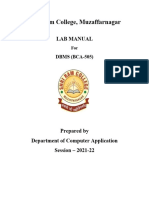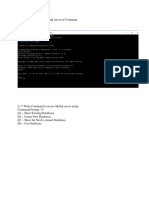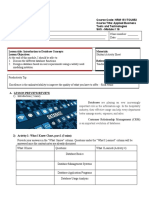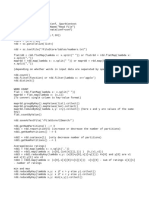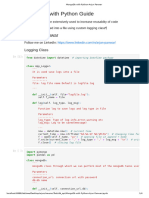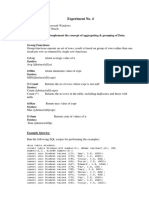0% found this document useful (0 votes)
6 views10 pagesSQL Simple Queries
The document contains SQL commands demonstrating various database operations including DDL (Data Definition Language), DML (Data Manipulation Language), and TCL (Transaction Control Language). It includes examples of creating tables, inserting, updating, deleting data, and using functions and procedures. Additionally, it showcases the use of aggregate functions, string functions, date functions, and PL/SQL programming with exception handling and conditional statements.
Uploaded by
magarratna471Copyright
© © All Rights Reserved
We take content rights seriously. If you suspect this is your content, claim it here.
Available Formats
Download as DOCX, PDF, TXT or read online on Scribd
0% found this document useful (0 votes)
6 views10 pagesSQL Simple Queries
The document contains SQL commands demonstrating various database operations including DDL (Data Definition Language), DML (Data Manipulation Language), and TCL (Transaction Control Language). It includes examples of creating tables, inserting, updating, deleting data, and using functions and procedures. Additionally, it showcases the use of aggregate functions, string functions, date functions, and PL/SQL programming with exception handling and conditional statements.
Uploaded by
magarratna471Copyright
© © All Rights Reserved
We take content rights seriously. If you suspect this is your content, claim it here.
Available Formats
Download as DOCX, PDF, TXT or read online on Scribd
/ 10


